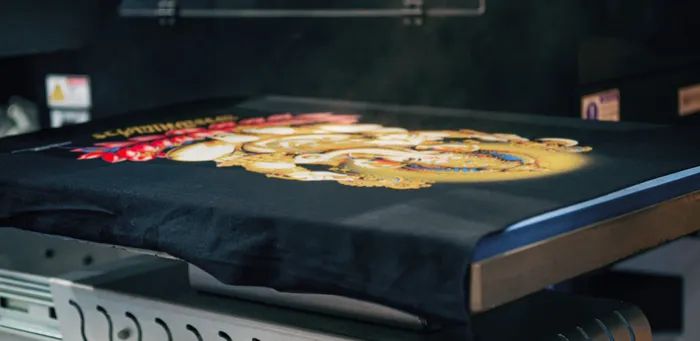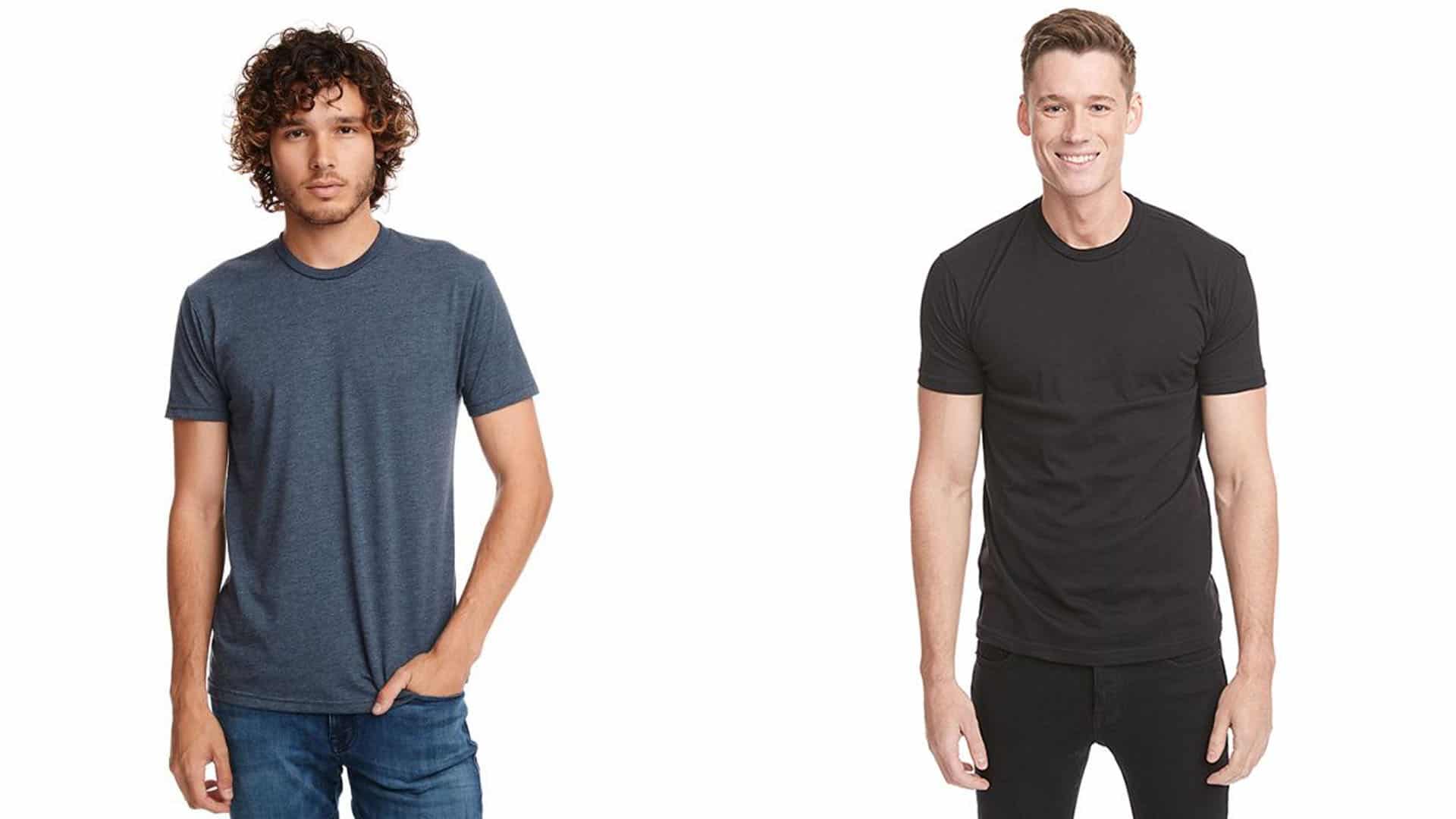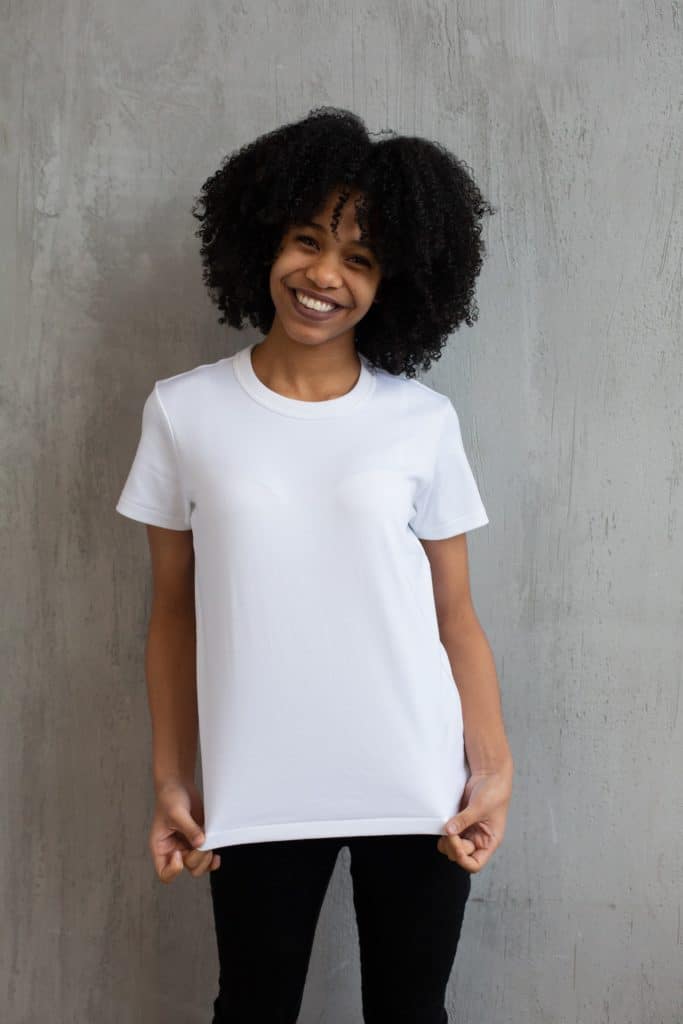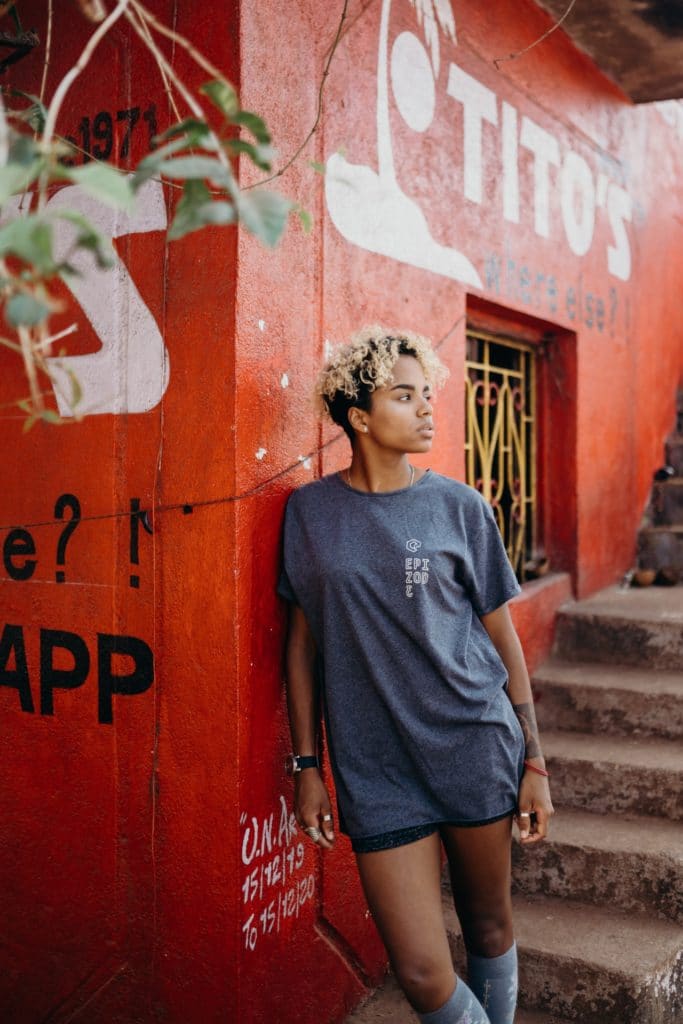Two of the most popular t-shirt fabrics are Tri-Blend and Cotton, and both these look great and are comfortable to wear. Each can be used for Screenprinting, DTG, or Vinyl. But what is the difference between the two?
What is the Difference Between Cotton and Tri-blend T-shirts?
Cotton fabric is soft, durable, moisture absorbent, and comfortable to wear. Tri-Blend is made up of 25% of Cotton and carries all its good properties, as well as the luxurious drape of Rayon; and the moisture-wicking and non-wrinkling quality of Polyester. Both textiles possess unique qualities.
To compare tri-blend and cotton material, we need to know more about their distinguishing qualities and other characteristics. Read on for more information so you can decide which fabric is the better one for your t-shirts.
Tri-Blend Vs. Cotton
Below is a summary of the properties and qualities of tri-blend and cotton:
Tri-Blend Characteristics
Tri-Blend fabric is made up of three materials, and they all bring different properties to this textile:
- 50% Polyester – is derived from fossil fuels or organic sources and is one of the world’s most popular textiles. Polyester is most often blended with cotton or other natural fibers to improve durability, shrinkage, and wrinkling properties.
The fabric is very breathable, has a high moisture-wicking ability, and has a medium level of pilling (snags), stretchability, and heat retention. Highly resistant to environmental conditions makes polyester ideal for long-term use in outdoor applications.
- 25% Rayon – this material was originally created as a substitute for silk, so it has a luxuriously soft feel. Rayon is made from regenerated and purified cellulose fibers from wood pulp and plants. Although this fabric is created from natural materials, certain chemicals are added, so it is considered a semi-synthetic material.
Rayon has a smoother finish than cotton and has only been introduced to the market since 2006. The material is breathable and moisture-absorbent but not very durable, and machine washing can cause either stretching or shrinkage.
- 25% Cotton – this combed, ringspun natural textile is breathable with high moisture wicking and medium heat retention ability. Although cotton is relatively strong, it is soft and comfortable to wear. The material is prone to pilling, wrinkling, and shrinking and tends to stretch.
The combination of polyester, rayon, and cotton gives tri-blend the properties of being a soft and comfortable material with a vintage and retro look and feel. The material is lightweight, durable, has a high absorbency, and is quick drying. Tri-blend has low wrinkling and shrinkage and is a perfect fabric for casual and sportswear.
Cotton Characteristics
Cotton is the most widely used fabric globally, and at least 75% of clothing products contain cotton. This textile is derived from the fibers surrounding the seeds of the cotton plant, and the first use of cotton dates back to 500BC.
There are four types of cotton; Pima, Egyptian, Upland, and Organic, which differ by the length of their fibers and the countries where they are grown. Organic cotton is any cotton grown without chemicals and not genetically engineered.
The distinguishing characteristics of cotton t-shirts are:
- Soft feel – the fabric retains its softness from the soft and fluffy cotton plant
- Durable – the cellular structure of cotton is strong, and this creates a relatively high tensile fabric
- Breathable – this fabric is all-natural breathable to keep you cool and dry
- Absorbency – cotton can absorb about 25 times its weight in water because of the space between its fibers.
- Dries quickly – this material is a quick-drying but not as quick as some synthetics
- Wrinkles easy – this fabric does wrinkle easily unless it is treated and will require ironing
- Pilling and rips – cotton fabric, although strong, is relatively prone to pilling and rips
Tri-Blend vs. Cotton T-shirts – Characteristics
Below are the pros and cons when comparing the characteristics of tri-blend and cotton.
| Tri-Blend T-shirts | Cotton T-shirts | |
| Pros | Ultimate silky softness Fits well (drapes the body) Enhanced breathability Moisture-wicking Quick-drying Does not shrink Reduced pilling Does not wrinkle Lightweight material | Soft to the touch Comfortable to wear Breathable Highly Moisture Absorbent Non-clingy Hypoallergenic – won’t irritate the skin Prints look more vivid on cotton |
| Cons | Can be clingy in hot weather Not allergy-free (can irritate some skin) | Heavy – not as lightweight as synthetics Prone to shrinkage (hot water/hot dryer) Wrinkles, if not treated Prone to pilling It takes longer to dry |
There are many similarities when comparing the characteristics of tri-blend and cotton material because tri-blend is made up of 25% cotton thus it carries some of the properties of cotton. But, the polyester and rayon materials bring their properties to tri-blend as well, which gives this material a slight advantage.
But, before we can decide which fabric is better, we have to look at other factors that will further impact the decisive outcome.
The Wearing Of Tri-Blend vs. Cotton T-Shirts
Tri-blend and cotton shirts both have the properties of being soft and comfortable to wear, but there are some differences. If we look at sportswear or wearing clothes such as T-shirts on hot days:
- Tri-blend t-shirts will absorb the moisture but does not hold it and will wick away the sweat from the skin by drying faster. The quick evaporation material will keep the user drier even when sweating during strenuous activities. Tri-blend material will hold its shape with heavy perspiring or moisture.
- Cotton t-shirts will also absorb the moisture but trap the sweat against the skin, taking longer to dry. With heavy perspiring or moisture, cotton will tend to stretch.
Caring For Tri-Blend vs. Cotton T-shirts
Wash t-shirts made from tri-blend material in cold or tepid water. You can use a dryer but set the setting on low. Tri-blend material does not wrinkle, has very minimal shrinkage, but should not be ironed or dry-cleaned.
It would be best if you wash cotton t-shirts in cold water. If machine washed, use a gentle cycle with minimum agitation to prevent shrinking.
You can use a drier on a warm temperature setting, but be sure to check the care label on clothing, as heat can make cotton shrink. Cotton t-shirts that aren’t preshrunk tend to shrink 1 or 2 sizes. Cotton clothes may need ironing as this material is prone to wrinkling.
DTG And Screen Printing: Tri-Blend vs. Cotton
Comparing tri-blend and cotton fabric, which material holds up to better to printing, and which is easier to print on:
Tri-Blend T-shirt Printing
Tri-blend fabric has a heather look resulting from the way the three different materials that make up this blend react to the dye. Polyester, being a synthetic textile, absorbs dye in a different way to cotton and rayon, which are both derived from cellulose fiber. The result of this blend is a textured, dual-colored dye.
Printing on tri-blends is tricky but can be overcome with special care and a few adjustments. The rayon in tri-blend can melt under high heat, and because the tri-blend is a stretchy material, the printed image could be distorted. Printing companies often use water-based ink on tri-blend as this fabric better absorbs this ink.
Cotton T-shirt Printing
The high absorbency of cotton allows this fabric to hold inks easily, and most cotton fabrics do not fade that easily. However, some cotton fabrics are uniquely dyed and are more susceptible to fading, such as denim.

Manufacturers only brush the dye on denim to prevent the dye from coloring the skin. This brushing of the material only on one side causes the color to fade quickly.
Printing on natural fiber cotton is very easy as it, like dye, readily absorbs ink. Bleeding and dye migration are significantly reduced when using cotton.
Conclusion
Tri-blend and Cotton have some similar and also different characteristics. Cotton fabric has been around for a long time and is a very popular fabric that many people love to wear. The softness, durability, moisture absorbency, and comfortable fit of this fabric and its ability to easily absorb dye and ink make cotton an outstanding textile.
On the other hand, Tri-blend has the advantage of taking the best qualities from the three fabrics from which it is created. It has the softness, comfort, familiarity, and printability of cotton, the durability, wicking, and non-wrinkling of polyester, and the luxurious drape of rayon. So, which is the better material for your t-shirts? It isn’t easy to choose! But, cotton is best for all types of clothing and linens, whereas tri-blend is the ideal material for leisure and sportswear.
Bryan E. Robinson is the former owner of TshirtGrowth. He has sold t-shirts since 2006 through dropshipping, screen printing, vinyl printing, DTG, Print on Demand, and more. Bryan has created his own t-shirt designs through Photoshop, Canva, and other platforms, as well as worked with freelancers to create many of his designs. Besides t-shirts, Bryan has over 18 years of experience in online marketing with eCommerce, B2B SaaS, B2C products, and more.




